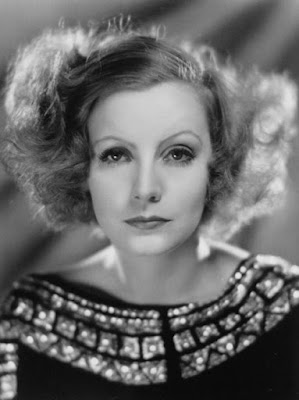"There's something strange about the nature of "celebrity." Many young people dream of "making it" in the field of their dreams, but few really understand the hidden cost of being famous. It might be fun at first. But when you read between the lines of many stories, you see that the mystique is also a burden."
--Burden of the Public Eye
This weekend I watched the Netflix documentary Garbo: Where Did You Go? What intrigued me was learning that at the height of her fame she withdrew from the limelight to live a private life of seclusion. I couldn't help but think of others who similarly pulled back in one way or another. J.D. Salinger came to mind, as did John Lennon in the mid-Seventies.
In his Chronicles: Volume One, Bob Dylan talks about the pre-eminent need to maintain a “normal” family somewhere away from the public eye. That task eventually took a toll on his first marriage. Some Dylan observers have gone so far as to speculate that his famous Woodstock motorcycle accident in the Sixties was staged as a mechanism for getting out of the public eye for a spell, some time to slow down and assess.
Greta Garbo was born in Sweden, 18 September 1905. Her birth name: Greta Lovisa Gustafsson. The youngest of three children, her childhood memories were not happy ones, growing up in a slum, long dark winters, an oppressive atmosphere in the home.
At an early age she became quite interested in the theater and directed her friends in make believe stories. She finished school at age 13 like other working class girls and found work but when the Spanish Flu swept through Stockholm her father became ill and lost his job. Greta took him to hospital appointments and took care of him, but he died when she was 14, which was very dark time.
Greta's first jobs included soap-lathering in a barber shop, running errands in a department store and modeling hats, which led to her being filmed for a commercial, which then led to being in a silent film. She evidently sensed she's found her calling because she followed up with two years of training in the Royal Dramatic Training Academy.
In 1924 the Finnish director Mauritz Stiller recruited her for a film based on a story by Nobel Prize winner Selma Lagerlof, and she was on her way. She had no idea that in a few years she would end up being the biggest name in Hollywood and one of its biggest international stars.
 |
| Illustration by the author. |
Many silent screen stars fell out of favor once audiences could hear them talk, but not Garbo. Her husky Swedish accent amplified her desirability and powers. She became the biggest box office draw in Hollywood.
Despite her fame, the human spirit within her was being smothered and strangled by contract pressures and the expectations of Louis B. Mayer. When her sister died, to whom Greta had been immensely close, the studio would not give her permission to fly to Sweden to attend the funeral. She was given two days to grieve then get back to work.
Living life in the public eye took its toll in other ways. Eventually she walked away, still in her early forties. Hollywood repeatedly attempted to coax her back but it was not to be. Nor would she share her reasons for this permanent voluntary hibernation, even with her friends. Four years before her death she opened up to her biographer Sven Broman. "I was tired of Hollywood. I did not like my work. There were many days when I had to force myself to go to the studio... I really wanted to live another life."[1]
The documentary has its flaws, but it does succeed in giving us a deeper appreciation for this artist from Hollywood's early years and the price of fame. It also made me want to see some of those films that catapulted her to the top.
[1] https://en.wikipedia.org/wiki/Greta_Garbo














.jpg)







.jpg)



.jpg)
.jpg)


.jpg)
%2022.jpg)


.jpg)






















